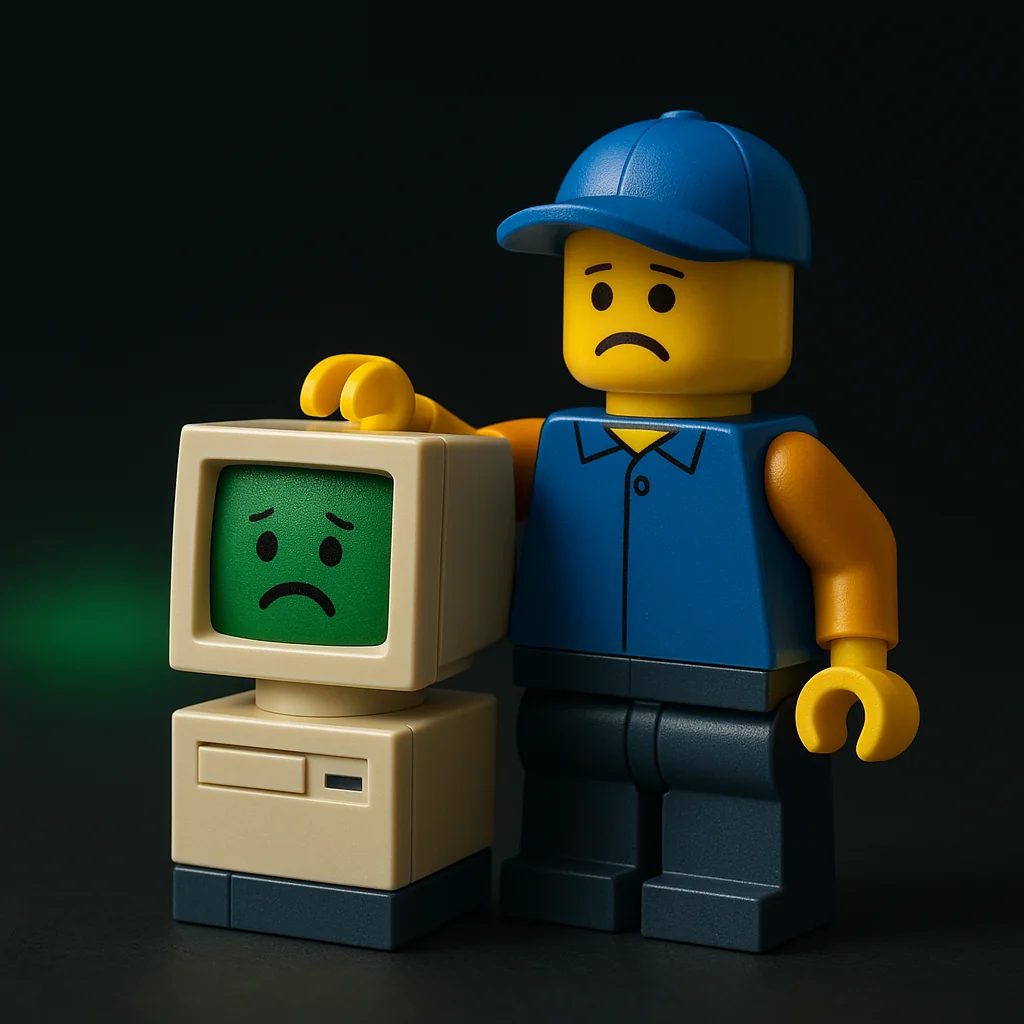Why does my computer keep restarting by itself?

Table of Contents
A few angles:
- Power supply sagging under load or bad DC jack (laptops).
- Thermal shutdowns from poor cooling or dried paste.
- Faulty RAM or unstable XMP/overclocks.
- Driver or kernel crashes; check Event Viewer for BugCheck entries.
- Short circuits from a loose standoff or debris inside the case.
Need help? Check here: /services/repairs/
What it might be (likely causes)#
Power delivery problems
A PSU that’s aging, underrated, or tripping OCP (over‑current protection) can reboot the system under GPU/CPU spikes. On laptops, a loose/burned DC jack or a failing charger can cause momentary brownouts.Thermal protection
CPUs/GPUs will hard‑reset if they hit thermal limits. Dust‑clogged fins, dead fans, or dried thermal paste are the usual suspects. See overheating patterns here: /posts/speed-up-old-laptop/ and /posts/top-problems-10-year-old-pcs/Memory instability
A flaky DIMM or an over‑ambitious XMP/EXPO profile can corrupt data and lead to reboots. Intermittent, load‑dependent restarts often trace to RAM timing/voltage.Kernel/driver bugchecks
Windows will reboot after a BugCheck (blue screen), depending on the “auto restart” setting. Logs live in Event Viewer and minidumps. Primer: Analyze bug check codesElectrical shorts or mechanical faults
A loose motherboard standoff, errant screw, or PCIe card not fully seated can short rails or cause ESD‑sensitive resets. Cases moved recently are prime suspects.
Things to check (quick, safe wins)#
Turn off automatic restart to see the error
Control Panel → System → Advanced system settings → Startup and Recovery → uncheck Automatically restart. If a blue screen appears next time, note the stop code. Event Viewer path: Windows Logs → System; filter for BugCheck, Kernel‑Power (41), and WHEA‑Logger. Minidump basics: Use WinDbg PreviewTemperature + fan sanity
Watch temps at idle and under a short load. If temps spike and you hear fans ramp too late—or not at all—cleaning and repaste may be due. For general thermal thinking: /posts/the-art-of-making-things-boot/Power path inspection
- Desktop: reseat 24‑pin ATX, 8‑pin CPU, and GPU PCIe connectors; check for burned plastic or wobble. Try a known‑good PSU if available.
- Laptop: test with battery removed (if removable) and AC only; wiggle the DC plug gently—any flicker hints at a jack issue.
RAM test and profile sanity
Disable XMP/EXPO and retest. Run Windows Memory Diagnostic (quick screen) or an overnight pass of MemTest86. If errors appear, test one stick at a time and swap slots. Background: MemTest86Driver/firmware checkpoint
Roll back recently updated display/storage drivers if reboots started after an update. Update BIOS/UEFI to the latest stable. If crashes mentionnvlddmkm.sys,amdkmdag.sys, or storage drivers, focus there.Case and standoff check (desktops)
Power off, unplug, and visually inspect for stray screws, cables brushing fans, or an extra standoff shorting the board. Reseat the GPU and RAM with firm, even pressure.Disk health and free space
Failing drives can provoke system instability. Check SMART; if reallocated/pending sectors are rising, plan a clone. Backup first: /posts/simple-data-backups-without-cloud/ and intake prep: /posts/prepare-for-computer-repair/
Patterns that point to the cause#
- Reboots only under gaming/exports → PSU, GPU driver, or thermals.
- Instant power‑cut with no blue screen → power delivery or short.
- Blue screen first, then reboot → driver/kernel; grab the stop code.
- After moving the PC → standoff/screw/GPU not fully seated.
- On battery but not on AC (or vice versa) → laptop power path/DC jack.
When to pause and get hands‑on help#
- Reboots persist after RAM testing, clean drivers, and known‑good power.
- You see Kernel‑Power 41 with no other clues and hardware reseating didn’t help.
- There’s a burning smell, arcing, or the DC jack is loose—stop and unplug.
A bench test with spare PSU/RAM and a controlled thermal check can pinpoint the failing link quickly.
Insight#
Random restarts feel chaotic, but they usually follow physics: power, heat, timing, or code. Stabilize the inputs—clean power, sane temps, conservative memory timings—and most systems become boring in the best way. Treat each reboot as a breadcrumb: a stop code, a temperature spike, a power blip. Follow the trail methodically and the culprit stops being random.
Need a careful diagnosis, DC jack repair, or PSU swap in Kirksville?
See /services/repairs/.